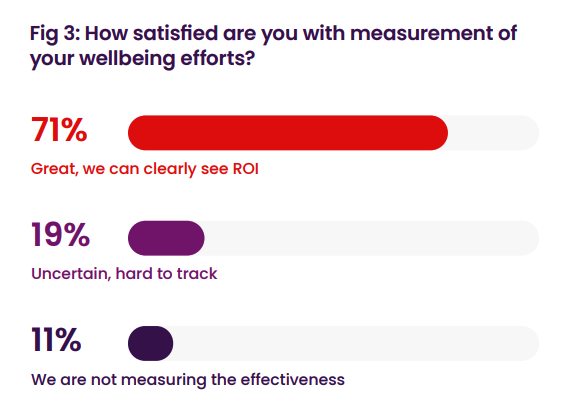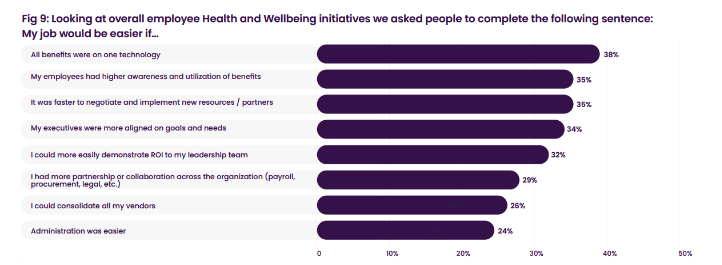Wellbeing is now a top priority for C-Suite executives, and organizations are paying the price for neglecting it. The consequences of ignoring employee health and wellbeing are evident in the growing number of resignations, burned-out managers, and financial losses.
But what about the organizations that have invested in employee wellbeing? The results are in, and it’s clear that these programs are more than just successful – they’re game-changers.
In our 2023 Global Workplace Health and Wellbeing survey, we asked 600 HR and Benefits leaders from around the world to reflect on the impact of their employee health and wellbeing programs. The survey revealed that these programs produce positive outcomes and deliver a clear return on investment.
Here’s what global HR and Benefits Leaders are experiencing with their health and wellbeing programs:
- 71% of companies observed a clear ROI from their programs
- 67% noted positive employee behaviors as the top outcome
And the overwhelming majority implemented their health and wellbeing programs to increase employee engagement and positively impact company culture.
What’s Next for HR and Benefits Leaders?
To understand where HR and Benefits leaders will focus for 2024, we asked them about changes they plan to make with their employee benefits.
Our survey showed that organizations are taking ownership of workplace wellbeing and making smart decisions to benefit their employees and bottom line in 2024.
Overall, 67% of HR and Benefits leaders noted increased participation in their health and wellbeing program compared to last year.
Not surprisingly, 91% of survey respondents said they planned to maintain (33%) or increase (59%) investment in their health and wellbeing programs.
These smart leaders are reaping the benefits: increased engagement, positive outcomes, and a clear return on investment. They understand that this matters to their organizational culture, their employees and their families, and the communities they are in. And guess what? They’re not stopping there.
These organizations are also stepping up their game to support mental health, flexibility, health navigation, and even hybrid and remote working perks – all to keep their people engaged, healthy, and happy.
Consolidating Benefits and Partners for More Efficient Employee Experience
It’s often the unintended – and expensive – side effects of fragmented tech that end up initiating change.
“While separate platforms or tools can have greater flexibility and provide cost savings, they do come with a downside because manual processes are required for both the user and the administrator to connect them and use multiple ones to fill in gaps for performance,” Jacques said. “In reality, integrated solutions may cost less than expected when factoring in difficult-to-measure expenses like lost productivity, high employee turnover, and need for always on innovation, compared to the fees of implementing a new health and wellbeing solution.”
Consolidating benefits and partners is a key priority for HR and Benefits Leaders. Having all benefits in one technology can provide a more efficient and streamlined employee experience. Leaders also recognize the value of higher awareness and utilization of benefits, as well as faster negotiations and implementation of new resources and partners.
Not surprisingly, 34% of leaders said they wish executives were more aligned with goals and needs. Leveraging a template to make a case for HR initiatives and planning how to help employees find and navigate benefits can be helpful tools to align on what success looks like.














